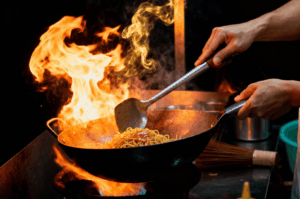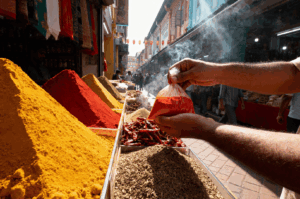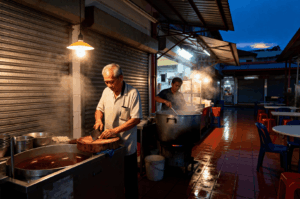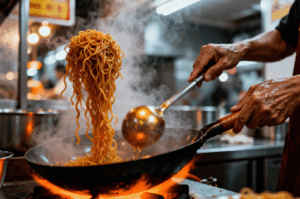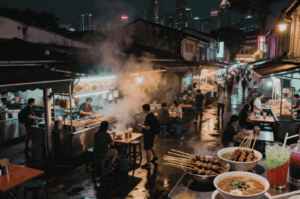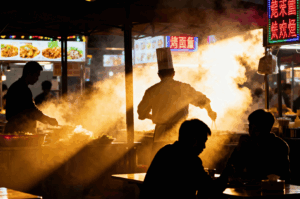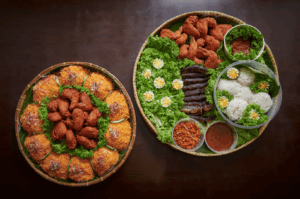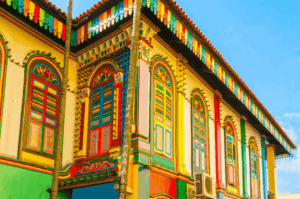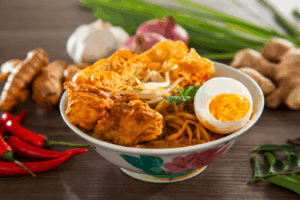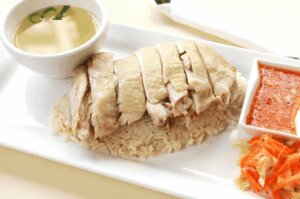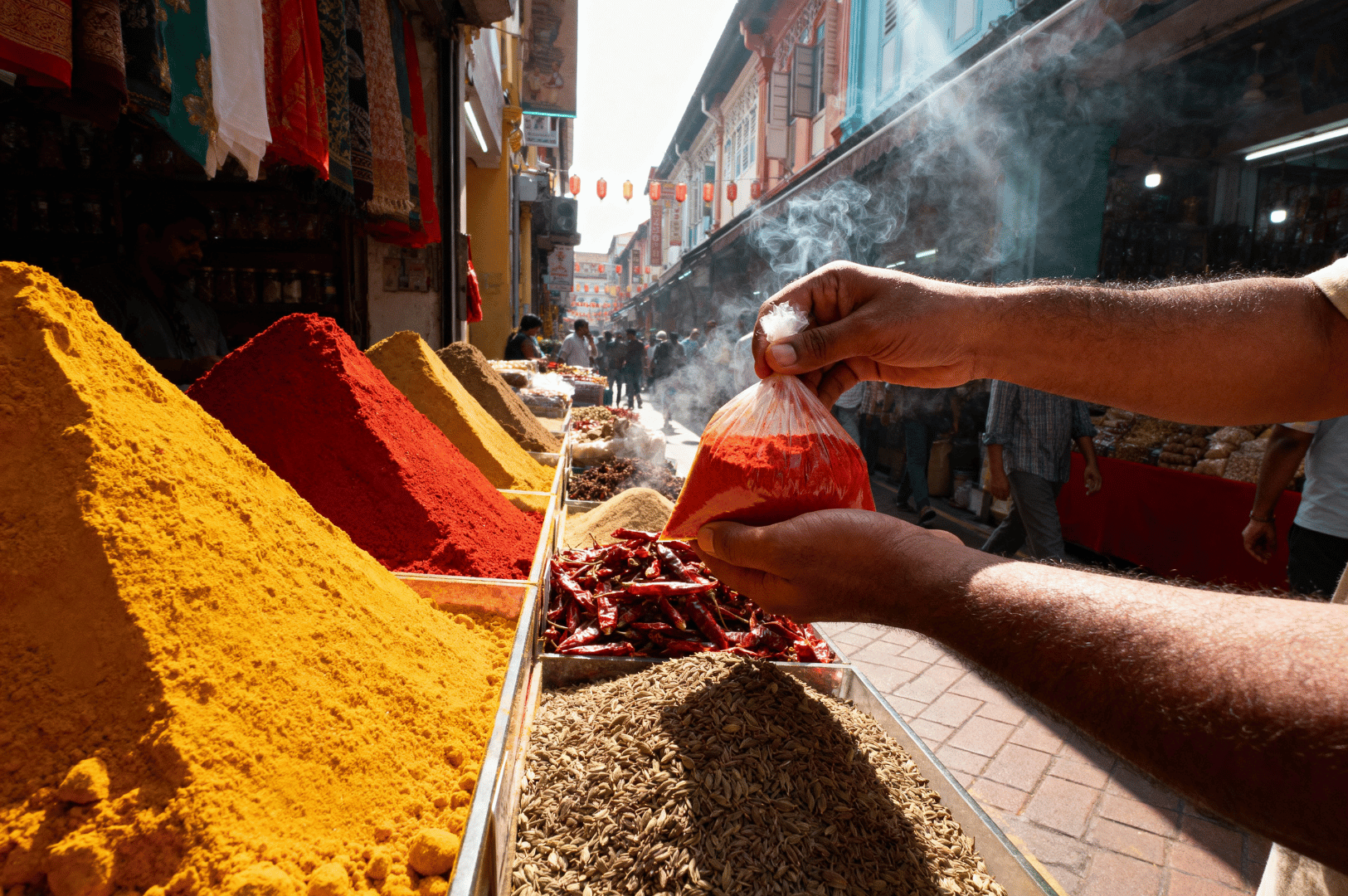
The moment I step into Little India, my camera feels like an extension of my senses. The neighborhood is a visual feast, a sensory overload that defines Singapore's food scene. As a photographer dedicated to capturing the essence of street food, this is where the art of food photography comes to life. The air is thick with the scent of spices and incense, a prelude to the delicious food and culinary creations waiting to be discovered. This is more than just a location; it's a living portfolio of Singapore's rich culture.
Food Photography Journey
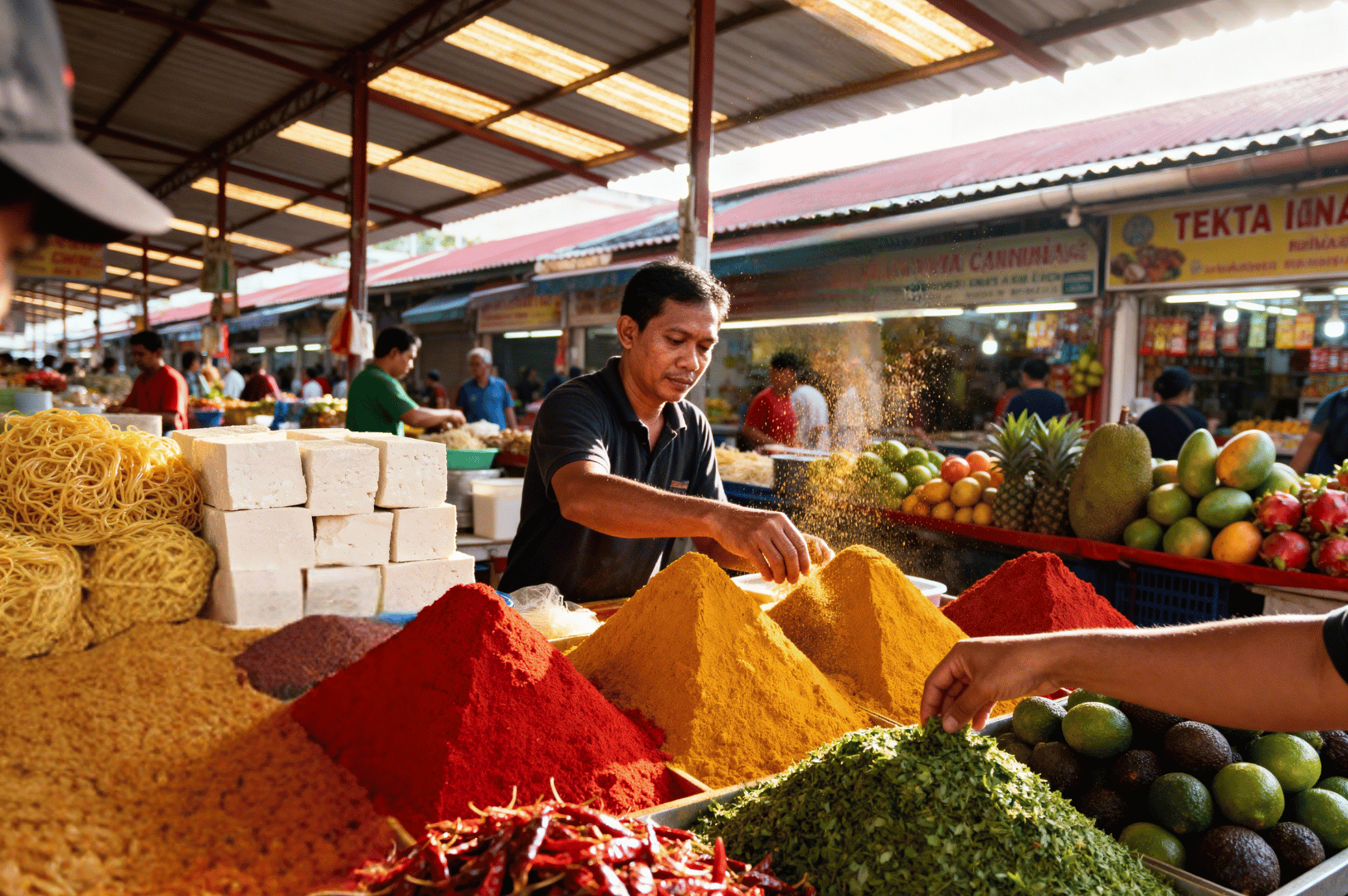
My journey always begins at the ground level of the Tekka Centre. This market is a whirlwind of activity, a prime spot for little India spice photography. Piles of fresh fruits, vegetables, and aromatic spices create a kaleidoscope of color. For photographers looking to capture food in its raw, authentic state, this is paradise. The textures and hues are a testament to the quality of ingredients that form the base of so many Indian dishes. I watch vendors interact with customers, their hands moving with practiced ease—a dance of commerce and community.
Here, every stall tells a story. I pause to watch a man meticulously arrange his display of tofu and fresh noodles. He explains that presentation is essential. "People eat with their eyes first," he says, a universal truth in the food industry. This philosophy is central to professional food photography. The goal is to create food photos that not only document a dish but also evoke a sense of taste and desire. The right shot can make a simple menu item look like a masterpiece and is key to how a business attracts customers.
How I Achieve Professional Food Photography
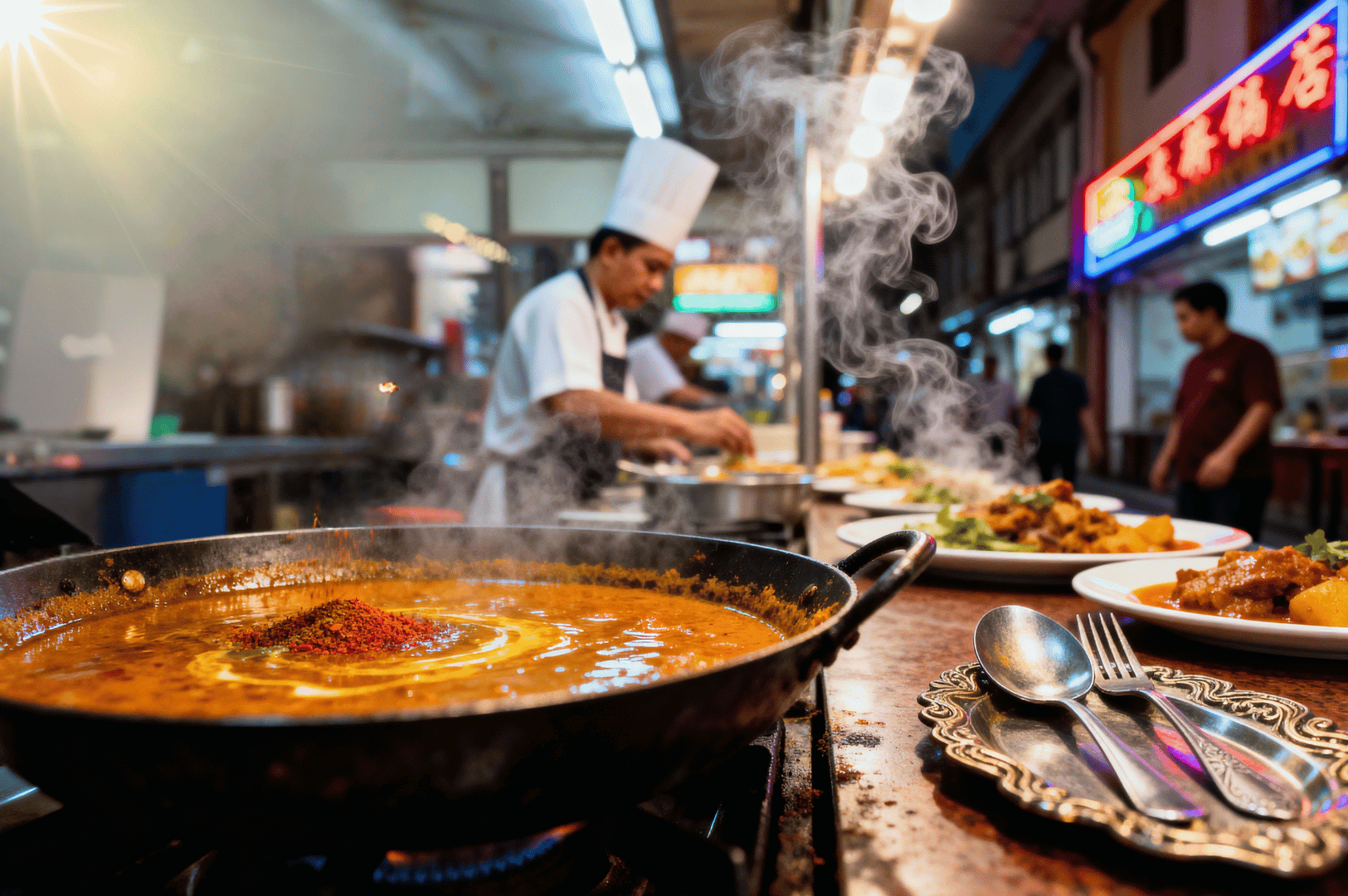
To capture the mood of this environment, I focus on the light. The market’s mixed lighting can be challenging, but it also creates opportunities for dramatic, high-contrast images. I use a prime lens to isolate subjects, blurring the background to highlight the artistry of a single dish or the intense focus on a vendor's face. This approach helps to convey the mood and create a powerful impression. My aim is to create photographs that do more than just show what's there; I want to make your mouth water.
Wandering from the market, I explore the side streets like Clive Street. This neighborhood is home to countless small restaurants, cafes, and street food vendors, each showcasing their unique cuisines. This is where I can capture the preparation process, from the sizzle of a hot pan to the final plating. Each dish, whether it’s a simple plate of street food or a curated collection from a restaurant menu, is prepared with a level of craft that deserves to be documented.
Good food photography is about more than just pointing a lens at delicious food. It involves understanding composition, light, and the story behind the meal. I often look for details—the ornate cutlery, the texture of the background, the steam rising from a dish—that enhance the overall image. These elements help to create a sense of place and atmosphere, transporting the viewer to that exact moment. It’s an essential skill for any photographer looking to build a strong portfolio in this industry.
Culinary Creations
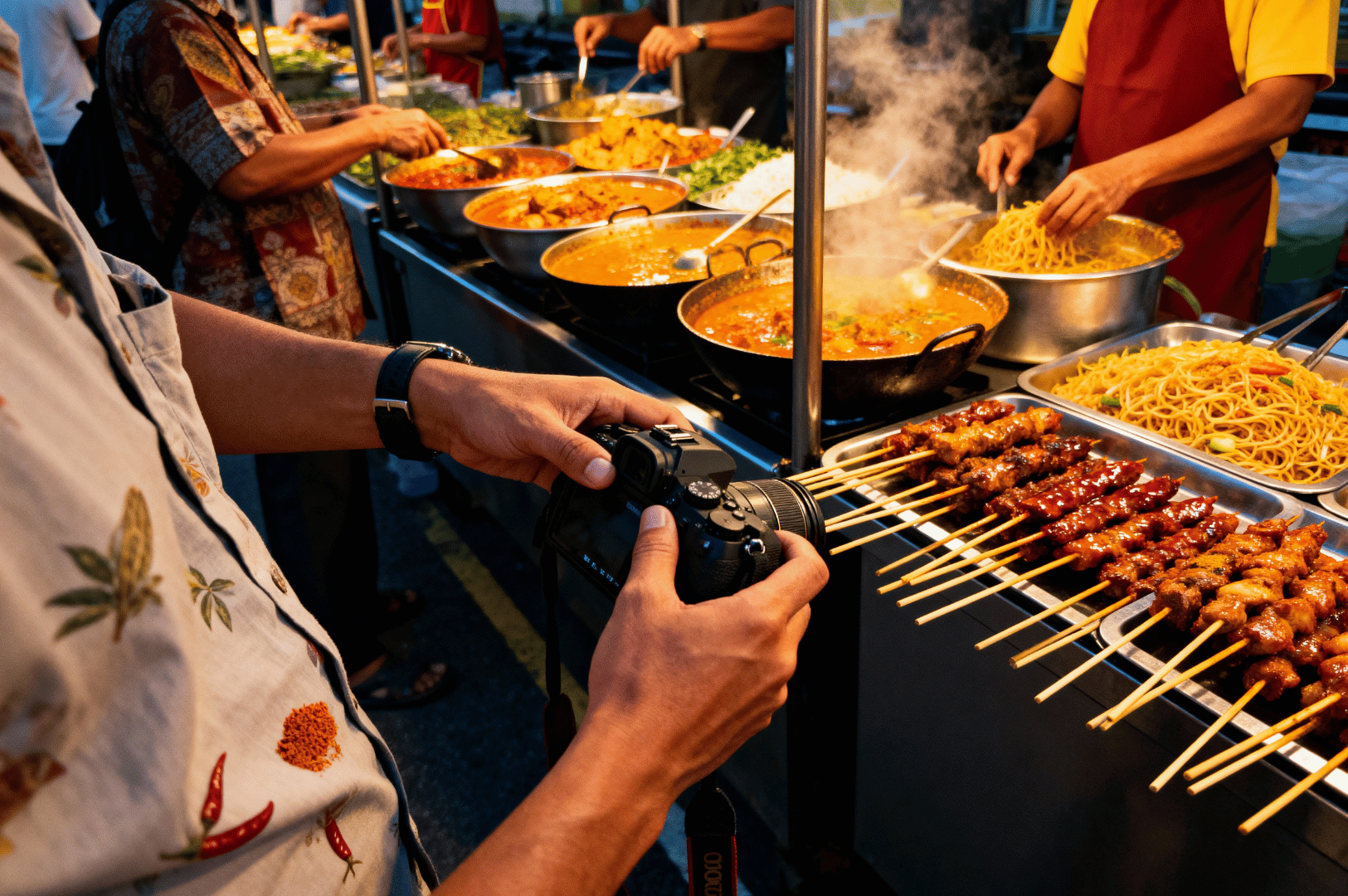
This dedication to craft is what connects the different food scenes in Singapore, from Little India to Chinatown. Whether it’s Chinese, Malay, or Indian food, the passion for quality is universal. The photographers who specialize in this field understand that their photos are a vital part of advertising for any café or establishment. A well-executed shot can elevate a brand and connect with customers on an emotional level.
As I pack up my camera, the scent of spices still lingering on my clothes, I feel a deep sense of satisfaction. My work today was not just about taking photos. It was about preserving a piece of Singapore's culture, showcasing the artistry of its people, and telling the story of its vibrant food scene. Through the art of photography, we can capture the essence of a place and share it with the world, creating a lasting record of the life and traditions that make a neighborhood like Little India so special.
The Symphony of Singapore’s Food Scene
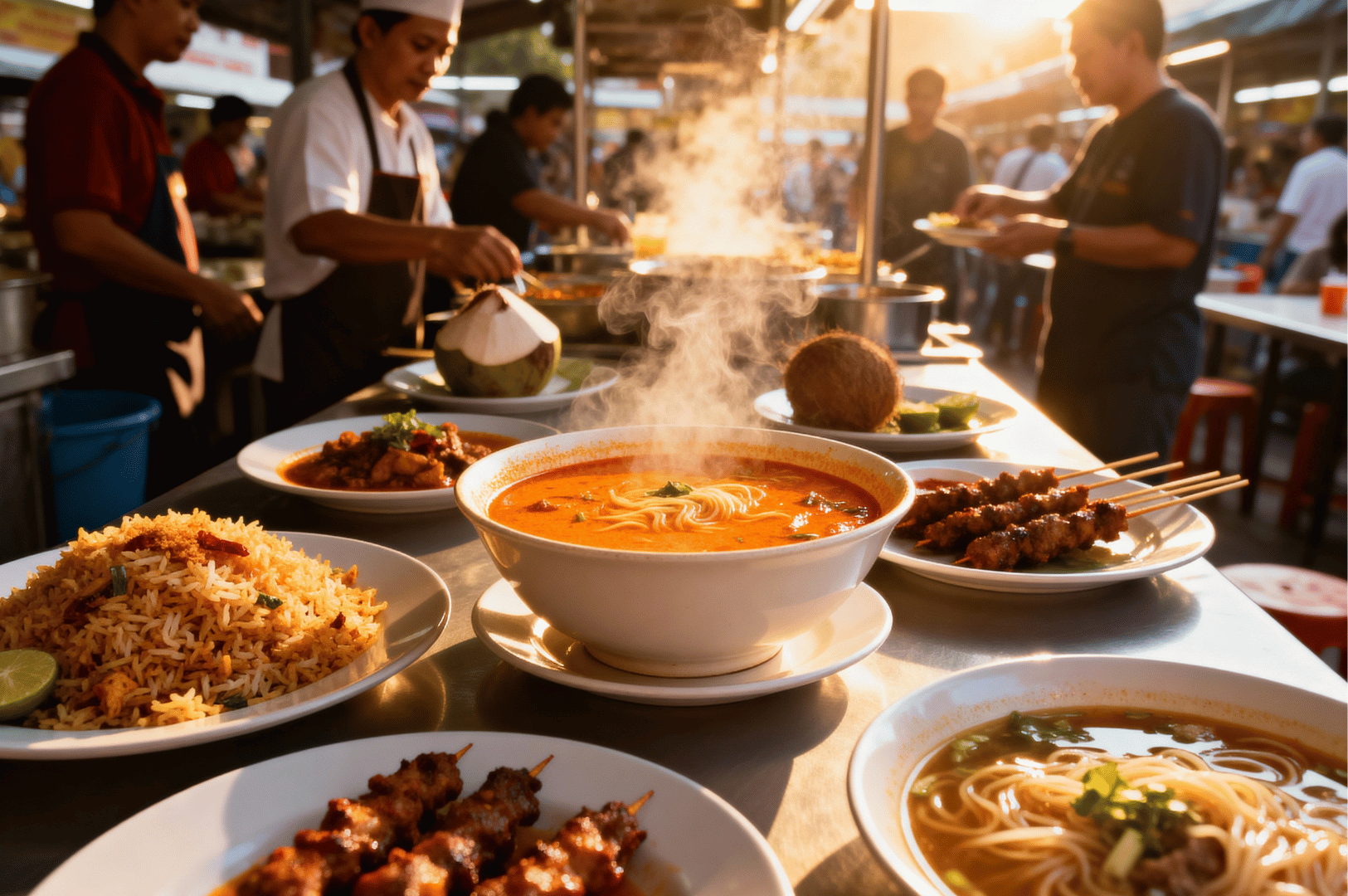
Singapore’s food scene is a harmonious blend of flavors, where the bold spices of Indian cuisine meet the delicate textures of Chinese noodles and the fragrant notes of Malay dishes. Each culture brings its own unique touch, creating a symphony of tastes that is both diverse and delicious. In this vibrant landscape, food photography plays a crucial role in capturing the beauty, quality, and creativity of every dish. If you're looking to photograph one of Singapore's most beloved dishes, like the iconic laksa, these golden hour photography tips can help elevate your shots.
For more visual stories and photography guides, visit Street Food Photographer.
Wok Hei Photography: Capturing the Forbidden Pleasure of Char Kway Teow
October 24, 2025
In the heart of Singapore, amidst the symphony of sounds and smells that define its hawker centres, a culinary performance unfolds. The creation of char kway teow is a spectacle of fire and skill, a…
Little India Spice Photography: The Seduction of Senses on the Spice Trail
October 20, 2025
The moment I step into Little India, my camera feels like an extension of my senses. The neighborhood is a visual feast, a sensory overload that defines Singapore’s food scene. As a photographer dedicated to…
Pre Dawn Hawker Rituals: The 4AM Warriors at Maxwell Food Centre
October 17, 2025
Long before the city awakens, a deep dedication to Singaporean food culture is already stirring within Maxwell Food Centre. While most of Singapore sleeps, a silent ritual begins. Here, in the quiet, pre-dawn hours, the…
Hands & Heat of Singapore Hawker Culture: A Food Photography Guide
October 13, 2025
In the vibrant heart of Singapore’s hawker centres, a visual story unfolds with every dish. It’s a narrative told not just through rich flavor and enticing aromas, but through motion, heat, and the tireless hands…
Singapore Night Food: Secret Tours & After Dark Culinary Delights
October 10, 2025
Steam billows from a wok, catching the neon glow of a nearby sign before vanishing into the humid night air. The sharp, tantalizing aroma of chili, fried chicken, and garlic mixes with the sweet char…
Steam & Shadows: Singapore Hawker Culture and the Dance at Maxwell Food Centre
October 6, 2025
Under the roof of Maxwell Food Centre, steam and light collide, casting deep shadows across glowing stalls. This is the soul of Singapore hawker culture, where every hawker stall tells a story and every plate…
Exploring Chinese Malay Fusion Cuisine: The Forbidden Union of Peranakan and Nyonya Food in Singapore
October 3, 2025
Step into Singapore’s hawker centers or heritage shophouses in Katong and Joo Chiat, and you’ll discover Peranakan cuisine-a vibrant fusion of Chinese ingredients and Malay cuisine. This culinary tradition, also known as Nyonya food, combines…
Spice Route: Little India Food Photography
October 1, 2025
Little India is at the heart of Singapore food, famous for its vibrant hawker centres, diverse dishes, and energy that draws both locals and visitors. Anyone interested in Little India food photography will find a…
Golden Hour Food Photography: Mastering Natural Light with Laksa
September 26, 2025
Picture a bowl of fiery laksa, its surface shimmering with a glossy glow as aromatic steam curls into the air. For food photographers, that sense of warmth and shine is a magical moment to capture-a…
The Slow Seduction: Hainanese Chicken Rice
September 22, 2025
Before you even take a bite, a plate of Hainanese chicken rice beckons with its glossy, tender chopped chicken cut, silky chicken skin, and a mound of glistening, chicken fat-infused rice. The delicate fragrance of…

